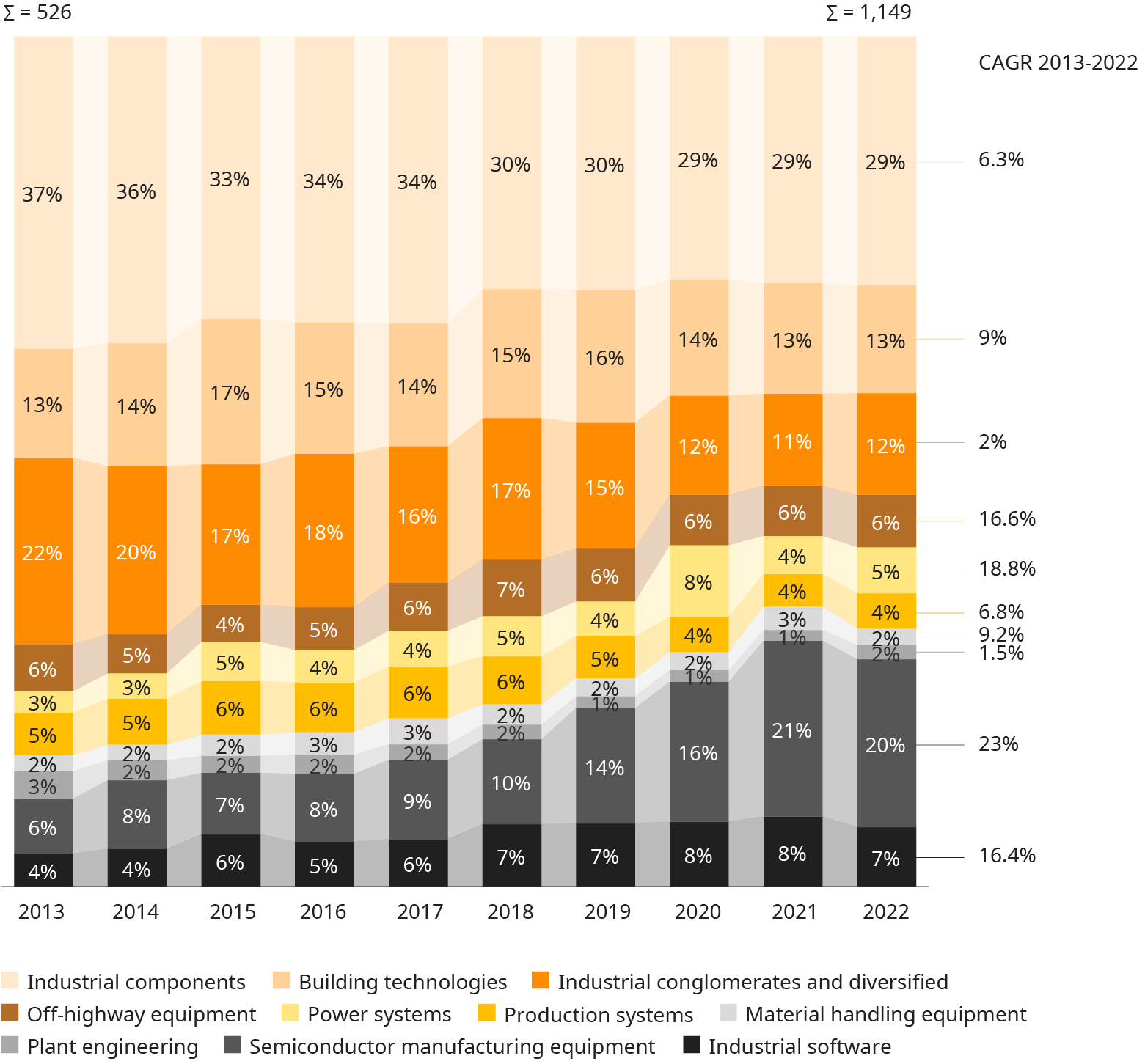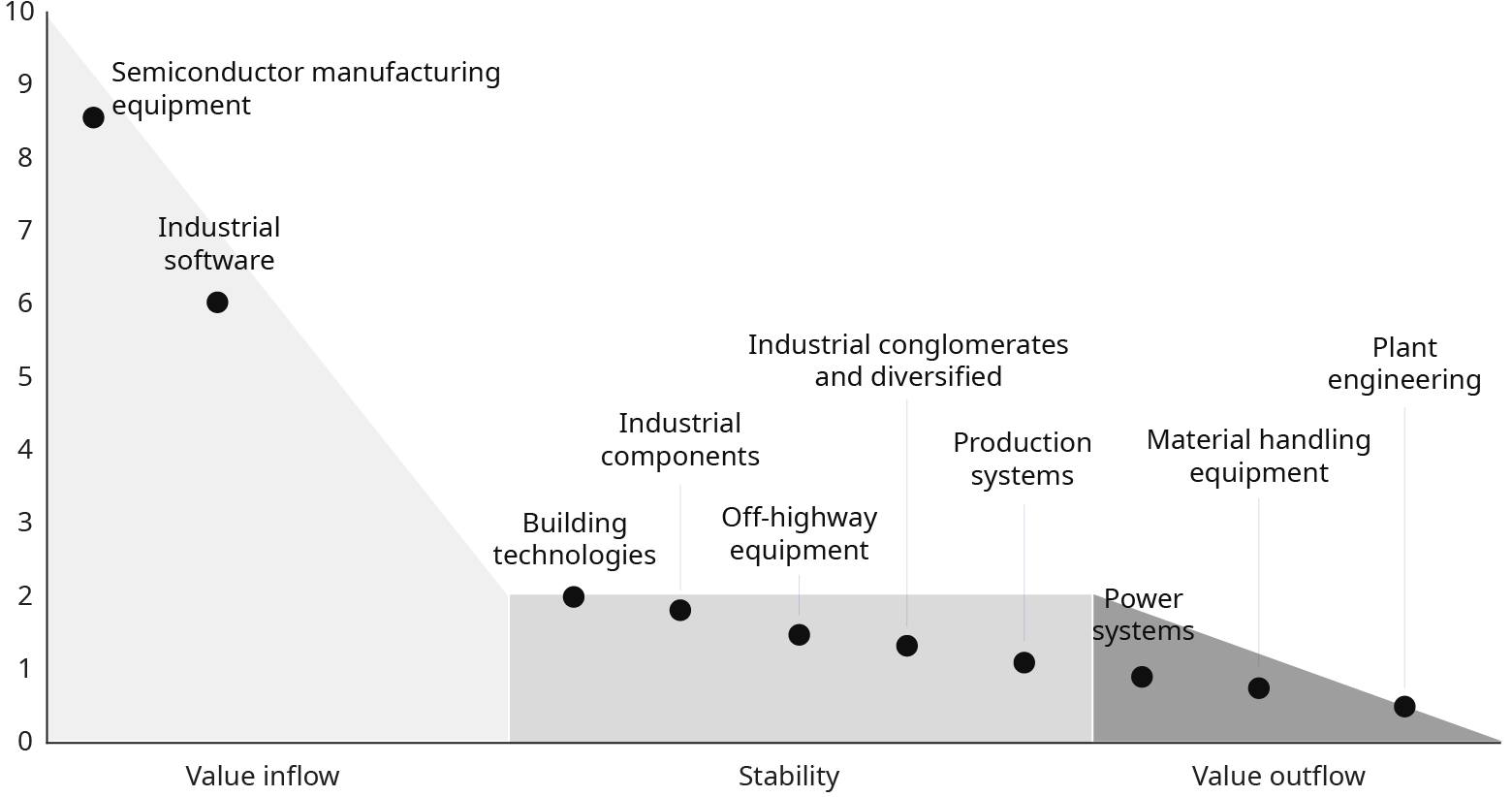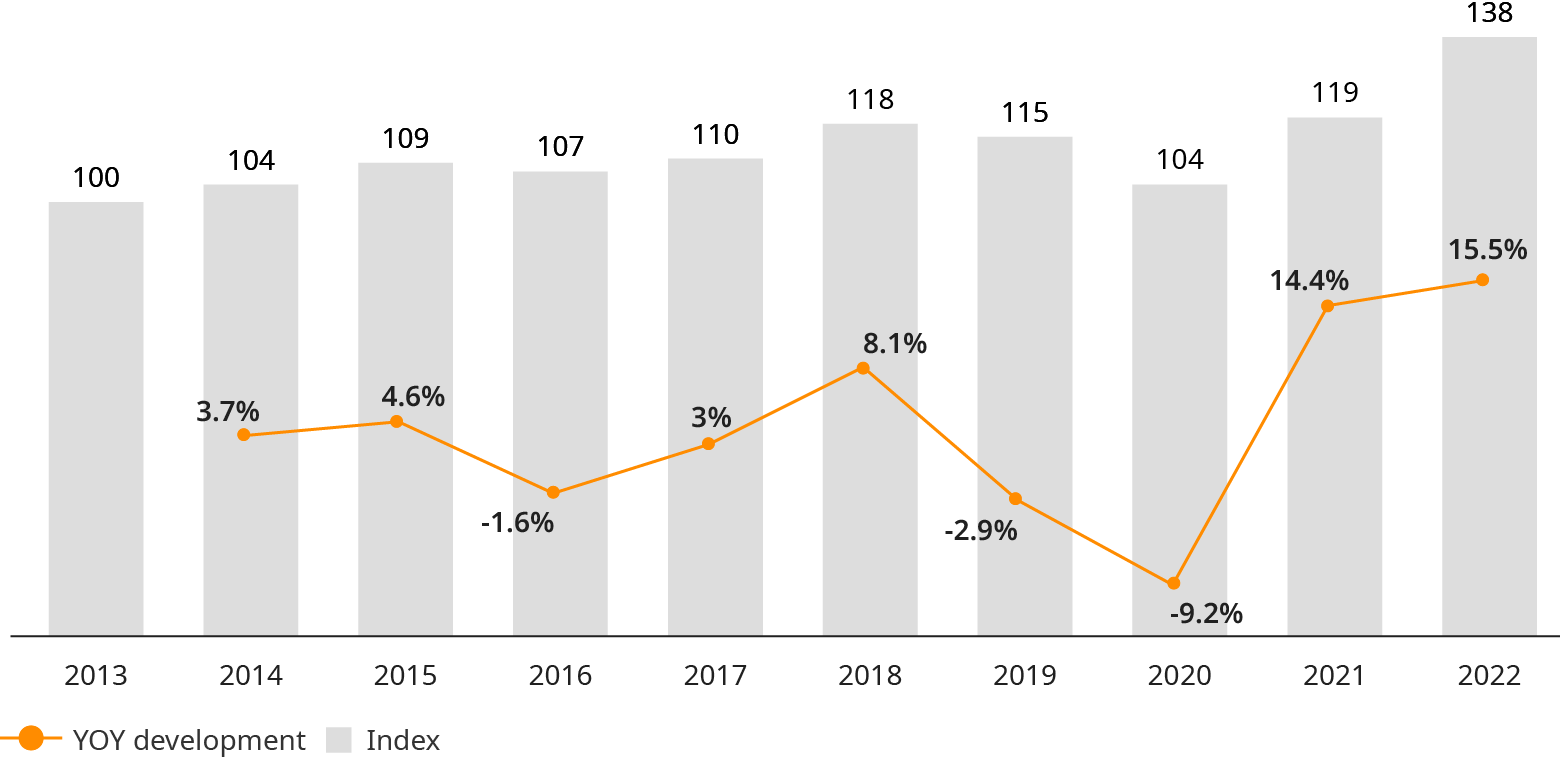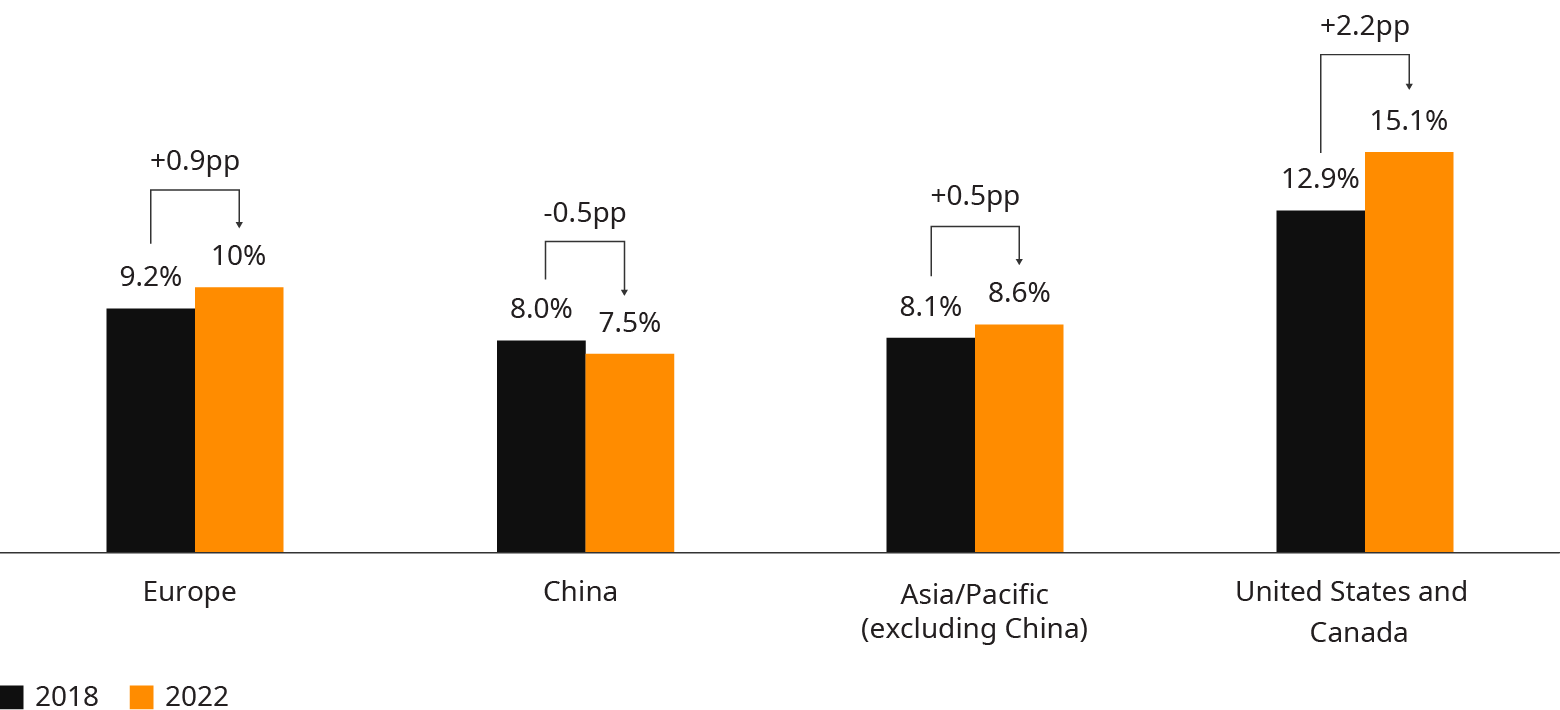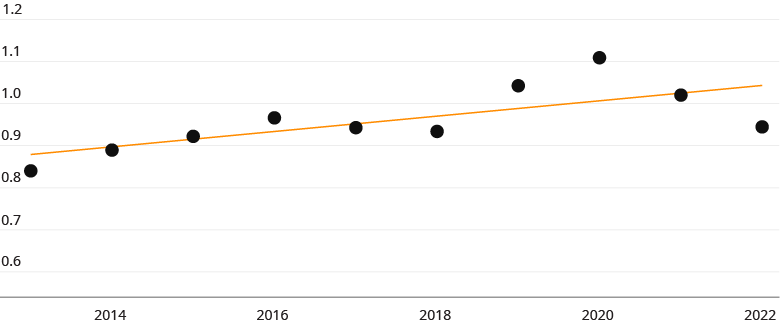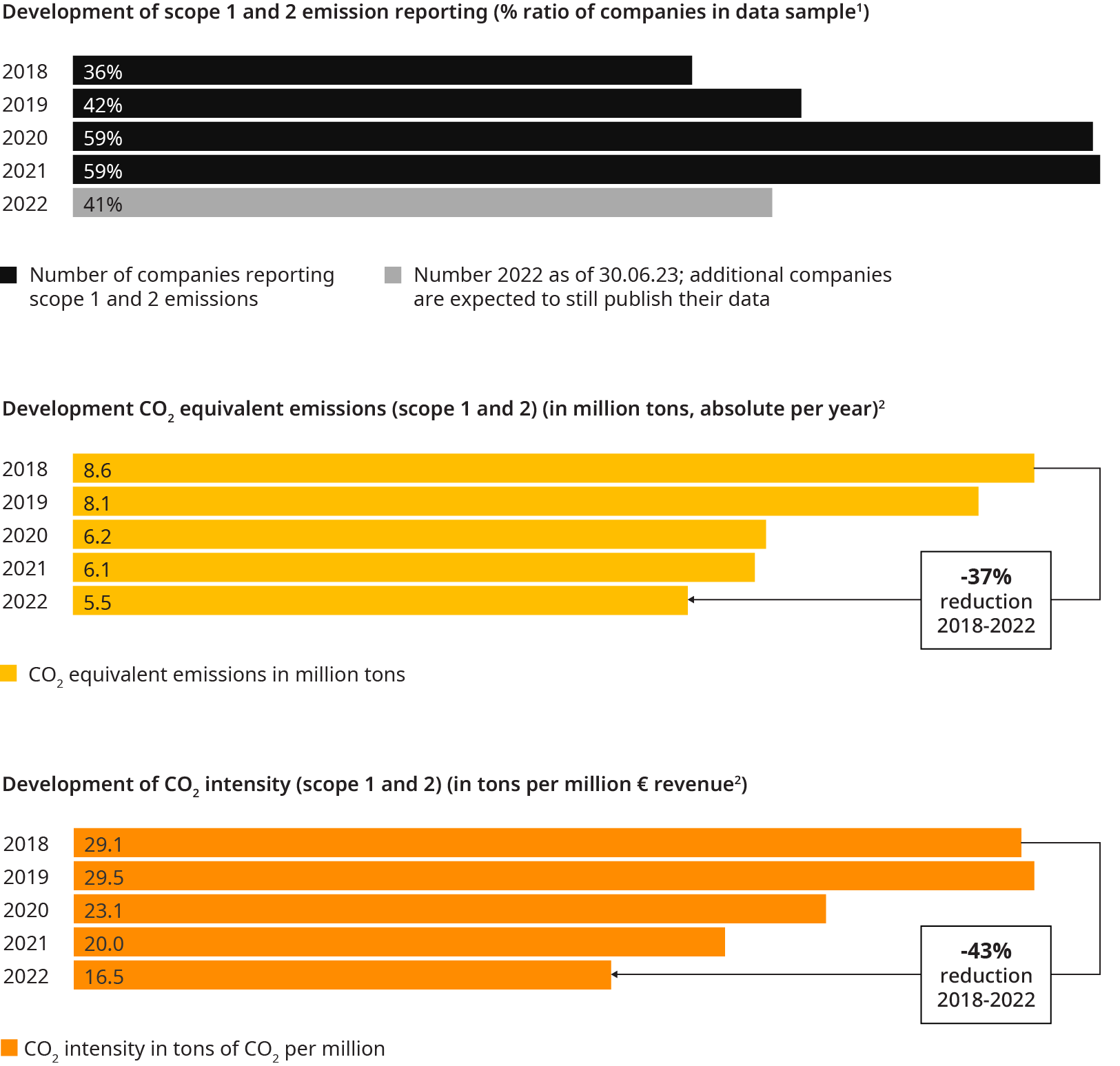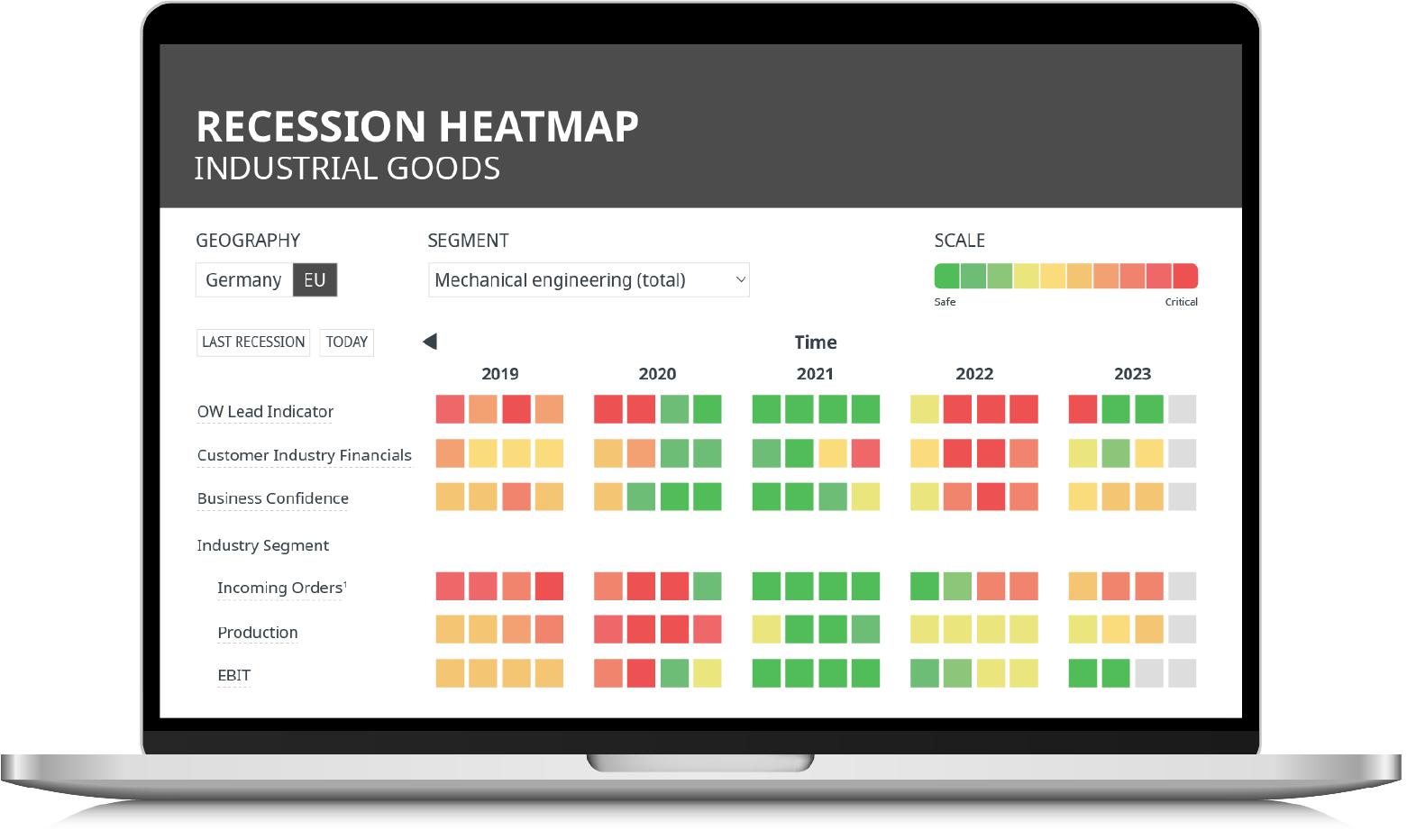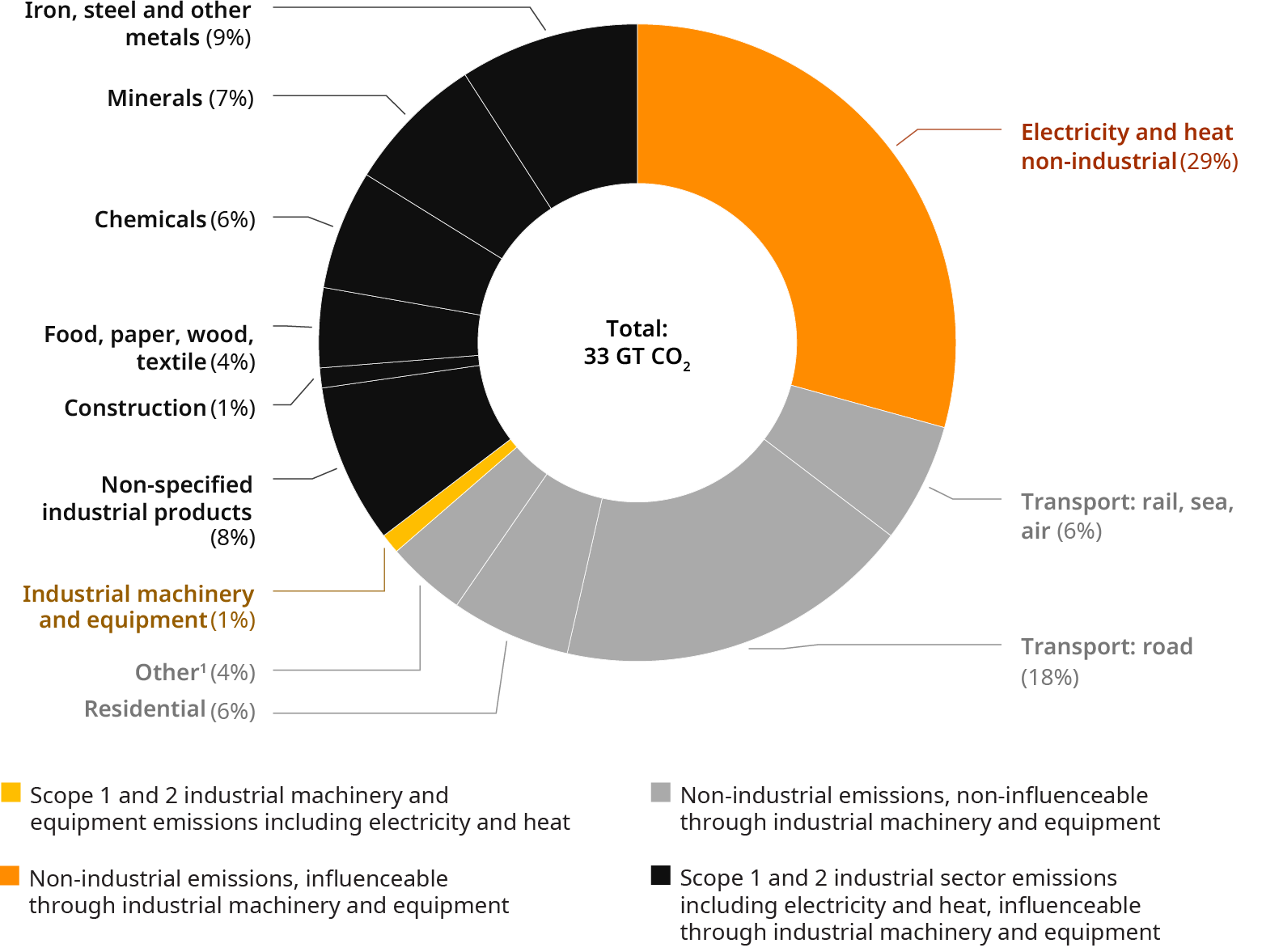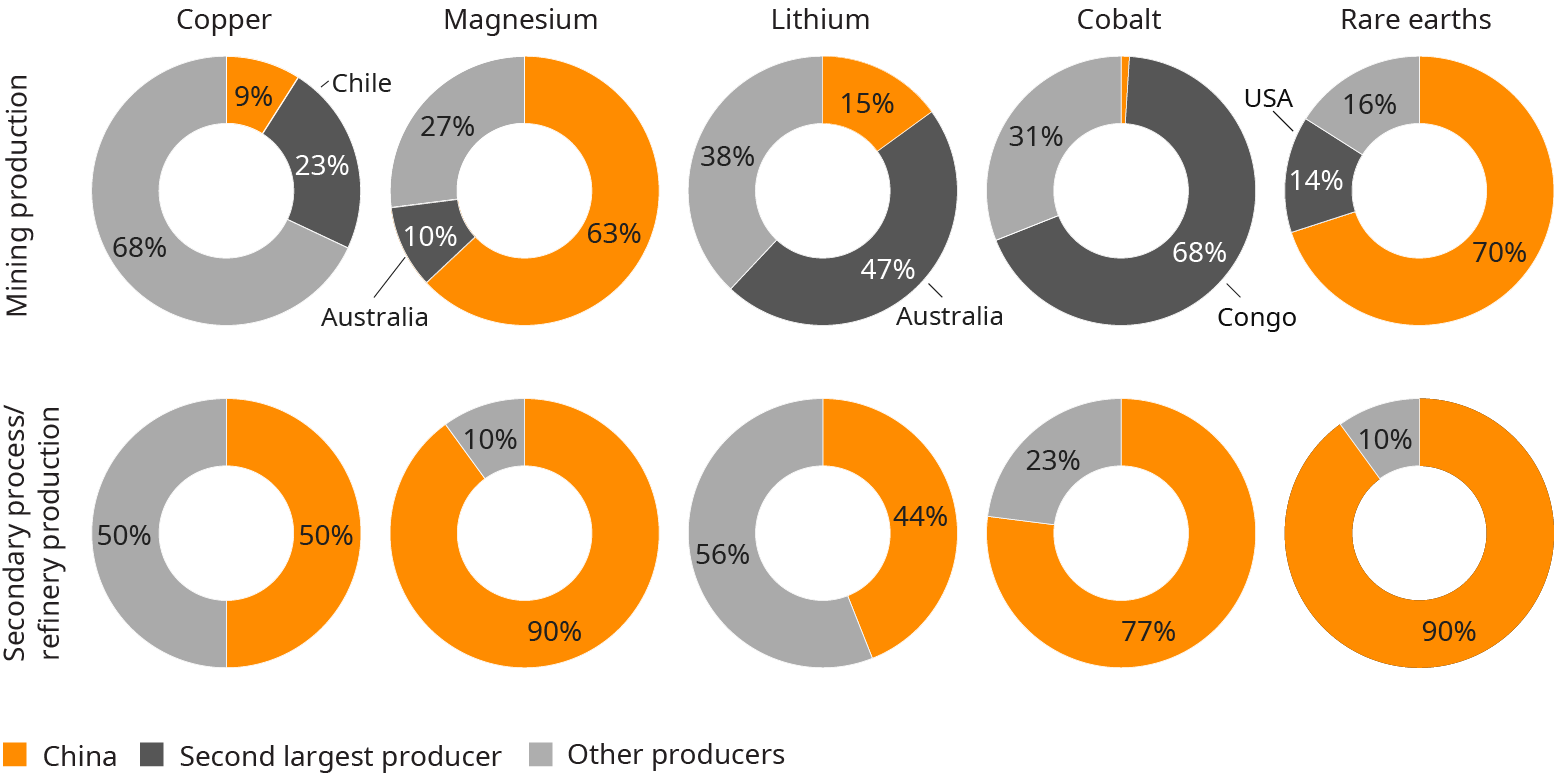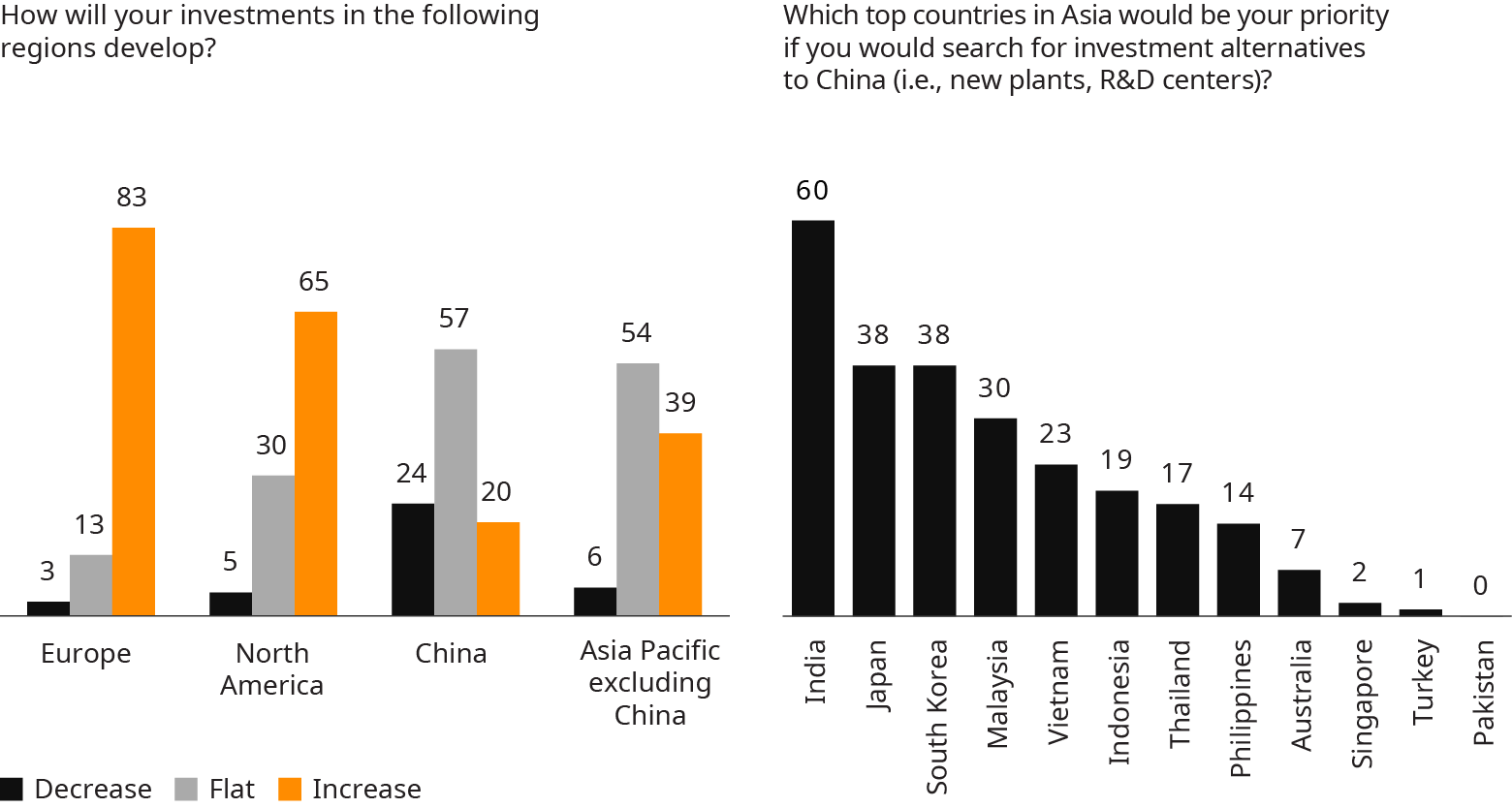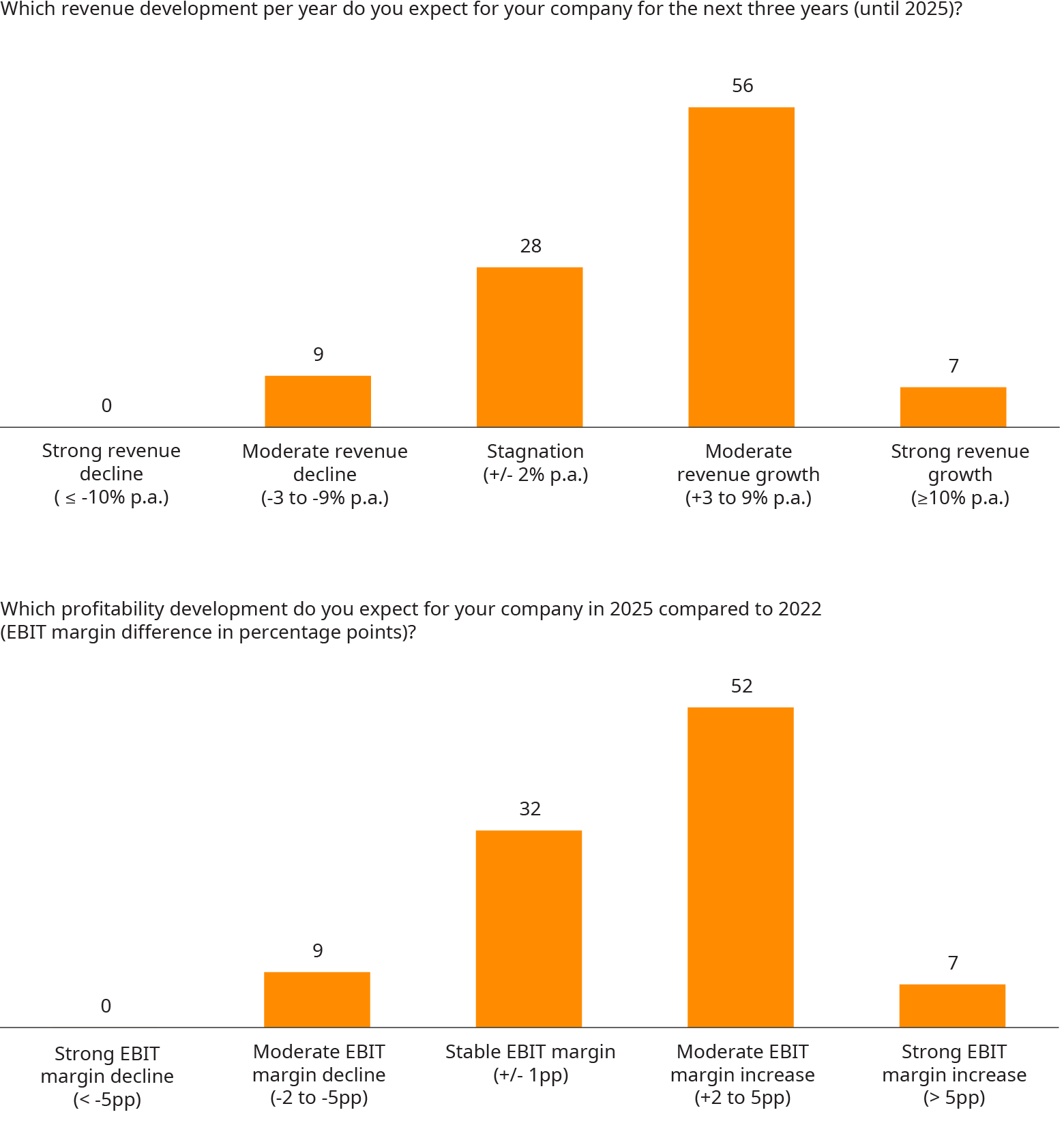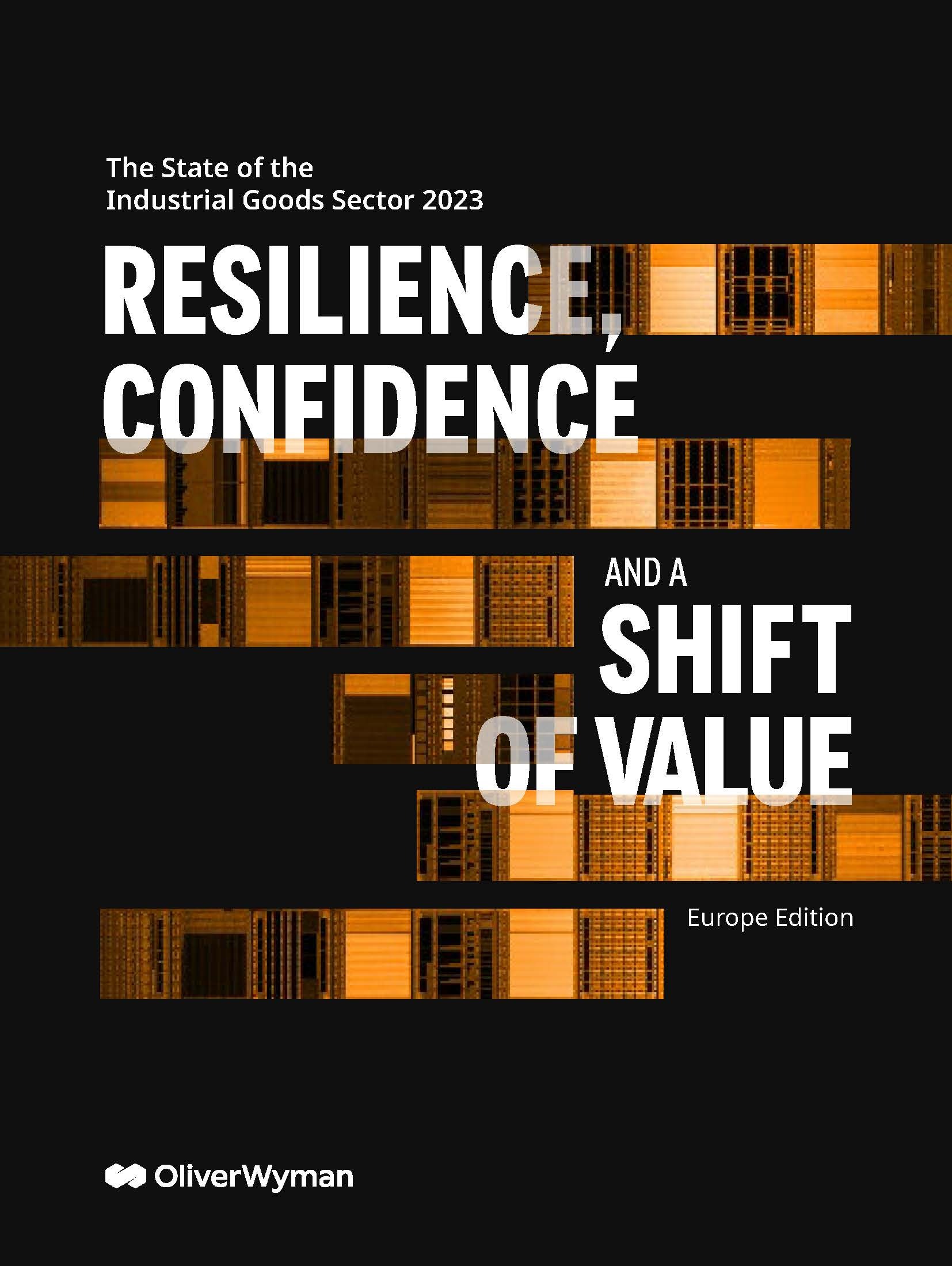Chapter 1
Overview Of Sector Development
Despite the subdued economic outlook in the short term and an array of challenges, there is an overall positive sentiment among executive managers within European industrial goods firms. Survey results indicate that more than 50% of these executives hold a favorable view concerning the state of the industrial goods sector. In contrast, a minority — less than 10% — express a negative sentiment. This data suggests that despite the various challenges present in today’s business environment, optimism trumps pessimism. Notably, companies boasting higher revenues — specifically those that exceeded €5 billion in 2022 — demonstrated an even more positive outlook. A remarkable 71% of respondents from these larger entities rated their sentiment above seven out of 10. This trend indicates that representatives from larger corporations are likely more confident navigating the present economic landscape.
Exhibit 1: What is your general sentiment regarding the state of the industrial goods sector?
Share of responses in %
Value shift
The capital market performance of the sector in Europe beats the MSCI Europe index by more than 5% Compound Annual Growth Rate (CAGR), underlining the overall strong performance of the sector compared to other European sectors, as illustrated in the below graph.
Exhibit 2: Stock index performance, 2013-2022
Indexed (2013=100), price at year end
At the same time, there has been a noticeable shift in value between various sub-sectors. Particularly, firms that specialize in industrial software and semiconductor equipment have seen a surge in value relative to the overall industrial sector market capitalization. Over the last decade, their relative value share has expanded significantly, from 10% to 27%.
This growth has been at the expense of other, more traditional sub-sectors.
The “winning” sectors have reaped the benefits of major trends such as digitalization and the continuous advancements in factory and process automation. On the other hand, power systems players — who experienced steady growth from 2013, mainly because of the boost the renewable energy portion received from the decarbonization megatrend — faced a setback in 2021. This decline was primarily due to the rising costs of raw materials, as well as supply chain and market challenges faced by the wind power industry in Europe.
Industrial conglomerates have seen a reduction in their relative value share, with only limited value creation over the past 10 years. Interestingly, during this period, several large conglomerates that underwent partial break-ups managed to significantly increase their market value for the remaining, now smaller, less complex portion of the business.
This trend emphasizes that investors tend to prioritize focus over diversification of a company’s operations.
Meanwhile, traditional sectors like production systems, although losing in relative terms, have managed to gain value in absolute terms.
Exhibit 3: Value migration by sub-sector, 2013-2022
Market capitalization in % of total, billion €, European company sample
Consequently, value inflow in terms of market cap over sales, as shown on the graph below, varies. This KPI reflects future investor expectations for the respective firm in a sector relative to the current business size. Among all sectors, semiconductor equipment and industrial software, followed by building technology, emerge as the front-runners.
Conversely, sectors like material handling equipment and plant engineering lag behind, indicating limited positive investor expectations.
Exhibit 4: Value inflow and outflow by sub-sector, 2022
Market capitalization/revenue, European company sample, qualifying date December 31
It’s also worth looking at additional cuts: From a regional perspective — defined by location of headquarters — North American firms take an increasing share of the total global market value of the industrial goods sector. Especially from 2021 to 2022, we see a strong value shift, with the share of North American industrials jumping from 33% to 37% of the total global value, and with the share of European industrials shrinking from 28% to 26% at the same time.
Exhibit 5: Value migration by region, 2021-2022
Market capitalization in % of total, European company sample, qualifying date December 31
“
Particularly, firms that specialize in industrial software and semiconductor equipment have seen a surge in value relative to the overall industrial sector market capitalization
Value drivers
The sector value and its migration are driven by several key underlying performance drivers, which we will explore in more detail in the following paragraphs.
Besides the well-established drivers top-line growth, profitability, and capital intensity, we introduce another dimension to the framework: sustainability performance. Sustainability is quickly becoming a determining factor due to the heightened attention it receives from investors, banks, regulators, and sector end markets.
Exhibit 6: Key value drivers
A sector of profitable growth
The European industrial goods sector has demonstrated a commendable resilience since the Covid crisis. Sector revenues rebounded impressively, now surpassing pre-pandemic levels by being 17% higher than those of 2018. Moreover, nominal revenue in 2022 increased by 20% over the previous year.
Sector profitability in 2022 experienced an uptick, registering nearly one percentage point higher than pre-pandemic levels in 2018. This quick rebound not only underscores the resilience of the companies but also draws attention to their adaptability in the face of massive supply chain bottlenecks.
Over a longer time frame, spanning a 10-year horizon, the sector has managed to maintain a solid Compound Annual Growth Rate (CAGR) of more than 3.6%. When evaluating profit as a central value driver, the sector exhibits noteworthy performance. There’s a consistently robust “earning power” with the average 10-year EBIT profitability being 9.4%. In 2022, this figure was even close to a double-digit margin of 10%.
In summary, the industrial sector has shown to be a relatively safe harbor in turbulent times.
Exhibit 7: Industrial goods sector revenue, 2013-2022
Indexed (2013=100), YOY in %, European company sample
Exhibit 8: Performance by sub-sector, 2013-2022
Weighted average EBIT margin and revenue Compound Annual Growth Rate (CAGR) in %, European company sample
However, differences in performance are significant across various sectors. Semiconductor equipment and industrial software stand out as front-runners, outpacing others in terms of profitable revenue growth. Conversely, certain sectors traditionally fall behind, notably plant engineering but also sectors like production systems (profit below overall average) or off-highway equipment (revenue growth below overall average).
The power systems sector is currently underperforming. This sector, predominantly led by wind turbine original equipment manufacturers (OEMs), faces substantial challenges in regaining profitability. These challenges stem from the continuing repercussions of price pressure, raw material price hikes, slow-paced development of new wind power sites, and recurrent technical problems experienced by some OEMs.
American companies perform better in both market value inflow and operational performance, not only because of a high share of structurally outperforming sectors like industrial software. There is also a higher performance in sectors where Europe traditionally plays strong, such as production systems or building technology. Key reasons include lower energy costs, less regulation, easier staff ramp-up/ramp-down, and a generally stronger commercial, profit-driven mindset prevalent among management and stakeholders.
In contrast, Chinese companies are witnessing a decline in profitability. By 2022, they were, on average, trailing European firms. Recent macroeconomic developments in China, like subdued growth and challenges in the real estate sector, suggest that a positive turnaround might not be likely, at least in the short term.
Exhibit 9: Profitability by region, 2018 versus 2022
Weighted average EBIT margin in %, global company sample
“
The European export model is not dead: European firms with an export focus are outperforming domestic and globalized businesses in terms of profitability
For another perspective on the data, we differentiated by global players (i.e., companies with a globally distributed asset base) versus export-oriented firms and mostly domestic players (i.e., companies with an asset base strongly concentrated in their home market). The results indicate that the European export model is not dead: European firms with an export focus take a sizeable share of the total number of firms (>20%) and are outperforming domestic and globalized businesses in terms of profitability (11.9% versus 7.2%/10.2%).
Rising capital requirements
The value of industrial goods firms has increased — despite an overall rise in capital intensity over the past decade, from 2013 to 2022.
Several, sometimes opposing, factors have likely influenced this trend in recent years. For one, capital intensity was driven upwards by rising inventories following major supply chain disruptions, especially during the last years. In some cases, the number of supply crises led to the reversal of the outsourcing trend of previous years, with many firms building up their internal capacities again — a process that’s inherently capital-intensive. Years with weak sales also had an impact on the curve in exhibit 10 — it technically increased the capital intensity quota, especially during the pandemic.
Conversely, there were factors with a dampening impact. The COVID pandemic and subsequent crises meant companies often made more conservative investments decisions, leading to less expansive capital allocation.
Exhibit 10: Capital intensity, 2013-2022
Capital employed/revenue, European company sample
Capital intensity varies between the sub-sectors. Industrial software firms, for instance, on average show a high intensity, mainly driven by goodwill on M&A and activated R&D. Sectors like plant engineering show a rather low intensity, driven by a typically high share of purchased value-add.
In a Return on Capital Employed (ROCE) comparison between the sub-sectors, there are high similarities with the EBIT performance by sub-sector — with a relatively strong performance of semi-conductor equipment producers, building technology firms, and industrial component players. In this comparison, a “softening effect” by the respective capital intensity can be observed. The production systems sub-sector with a rather low capital intensity, for instance, manages to achieve a relatively higher ROCE performance compared to an EBIT-based comparison.
Progress on sustainability performance — but still a lot to be done
In recent years, sustainability has become much more critical to industrial firms. This heightened emphasis is driven by several factors. Regulatory disclosure requirements, such as the Corporate Sustainability Reporting Directive (CSRD), have begun to exert pressure on firms. Customers are now more discerning, often demanding transparency about the carbon footprint of a product. Additionally, financial institutions are steadily incorporating ESG criteria into their lending decisions, with interest rates and credit approvals now often contingent on meeting these standards. Also, institutional investors and asset managers consider those criteria more and more when making investment decisions.
The majority of industrial companies have embarked on the sustainability journey, albeit at varying paces. Most have set scope 1 and 2 targets and have started to deliver against them.1 There is visible progress on this front: The European companies who have published scope 1 and 2 figures from 2018 to 2022 have managed to reduce their emissions by 37% in that time frame, which is clearly a move in the right direction.
However, even if taking 2021 as base year (it is the last year with full sample availability), only 59% of firms are reporting scope 1 and 2 emissions at all.
Exhibit 11: Scope 1 and 2 emissions performance
In addition, only a fraction of companies (less than 15%) is reporting scope 3 emissions.2 Of the more than 200 companies in the sample, only six have provided data on their scope 3 performance over the time frame of more than two years. For more than 97% of the leading European companies, scope 3 remains opaque. While the reluctance to disclose might be attributed to the challenges and intricacies involved in baselining and modeling carbon data throughout the value chain, it is still surprising that so few companies report scope 3. This type of transparency is not just a regulatory expectation; it is increasingly demanded by customers, making it business-critical.
Exhibit 12: Development of scope 3 emissions reporting
% ratio of companies in data sample1
Consider target setting: Around 50% of all industrial firms in our European sample report scope 1 and 2 targets. However, only 24% are participating in the Science-Based Targets initiative (SBTi), which is one of the leading non-governmental institutions approving emission targets. Of those 24%, just 50% have an approved target for 2030 that is aligned with the Paris Agreement goal of limiting the temperature increase to 1.5°C. Only 59% have committed to net-zero — but this is still a relatively high percentage and on average 20% more than other sectors.
Exhibit 13: SBTi participation and net-zero commitment
With regards to scope 3, the number of companies with a disclosed and approved target is even more limited, leaving significant room for improvement.
Sustainability is clearly a value driver recognized by capital markets. Oliver Wyman analyses show that firms with a strong sustainability focus (“A-listed CDP”) outperform laggards by up to 17% in terms of market cap growth. Based on our work for financial institutions, we see more positive financing conditions for firms transforming into a low-carbon business. Firms from the renewable industry, for instance, had a weighted average cost of capital (WACC) that was 37% lower than average over the last years.
A matter of individual excellence
Business model and operational excellence matter — the average profit difference between companies in the highest and lowest performance quartile in each analyzed sub-sector is a full 10 percentage points.
It is crucial to note that a sector’s overall strong performance does not guarantee an individual company’s success. For instance, to be successful, it is not sufficient to simply belong to a strong sector like industrial components. Conversely, even trailing sectors like plant engineering can present opportunities for high double-digit growth and profits. The sector a company operates in structurally drives profit level to some degree, but the specific business model and operational excellence of the individual company is an even stronger driver of profitability. This is also true for capital market valuation, especially in high-growth and disruptive sectors, like software and semiconductor equipment.
Exhibit 14: EBIT margin by sub-sector, 2022
EBIT in %, European company sample






